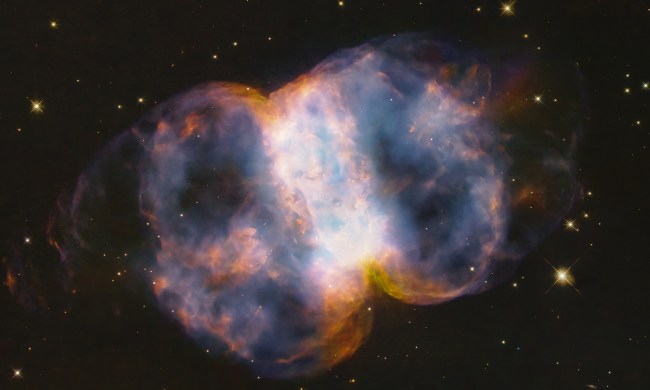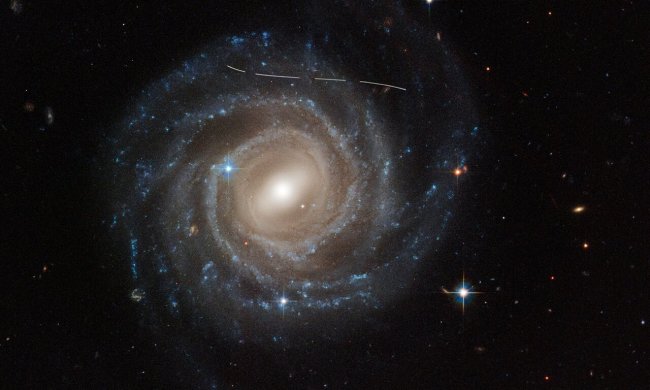
This week’s Hubble image shows a glittering host of galaxies of all shapes and sizes. Dominating the image is the galaxy cluster ACO S 295, located 3.5 billion light-years away in the constellation of Horologium.
Galaxy clusters are almost unfathomably large, and in fact, are the largest objects in the universe held together by gravity. They typically contain between 100 and 1,000 galaxies, and their mass can be as large as a quadrillion suns, or 1,000,000,000,000,000 suns. There is also matter to be found in the space between galaxies, which turns out to be not entirely empty. There is intergalactic gas there, forming a plasma called the intracluster medium.
Because galaxy clusters are so very large, their gravity affects light that passes close to them. If you look very carefully, you can see that the background galaxies in the image have elongated and smeared shapes. This happens due to a phenomenon called gravitational lensing. The light which comes from these galaxies has to pass by the central galaxy cluster on its way to us. The galaxy cluster has such a huge gravitational effect that it distorts the light traveling close to it. By the time this light arrives at Earth, the shape of the background galaxies has been distorted.
Gravitational lensing doesn’t only happen with huge galaxy clusters. It also happens on a smaller scale, such as when light from one star passes close to another star. This acts similar to a magnifying glass, allowing scientists to see more details of the background star. This technique can even be used to search for exoplanets, such as will be used in the upcoming Nancy Grace Roman Space Telescope.



